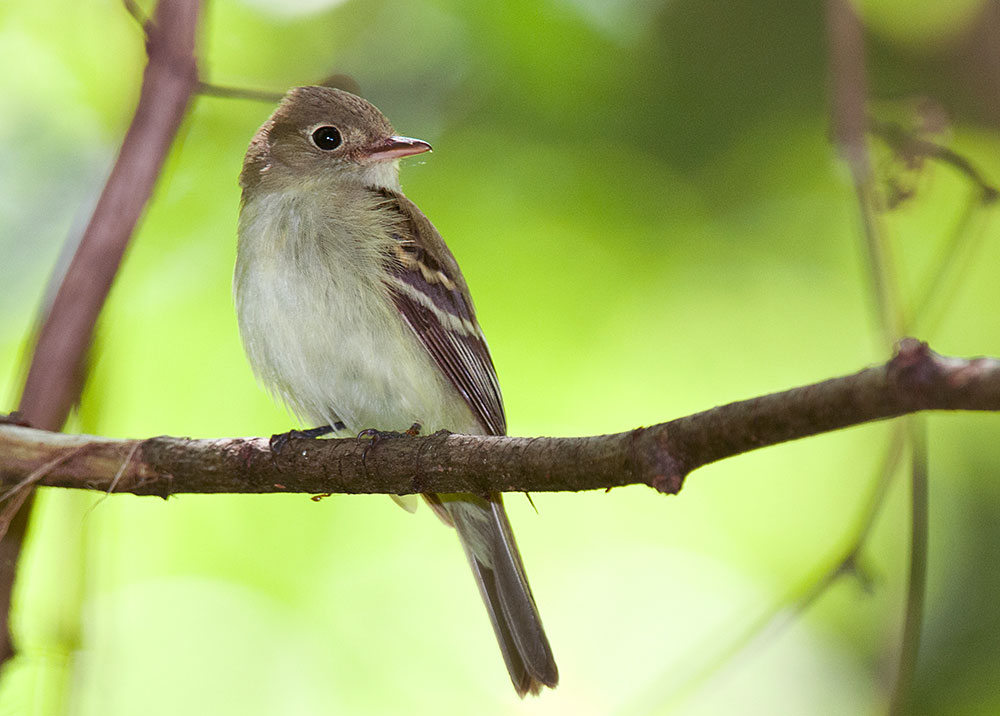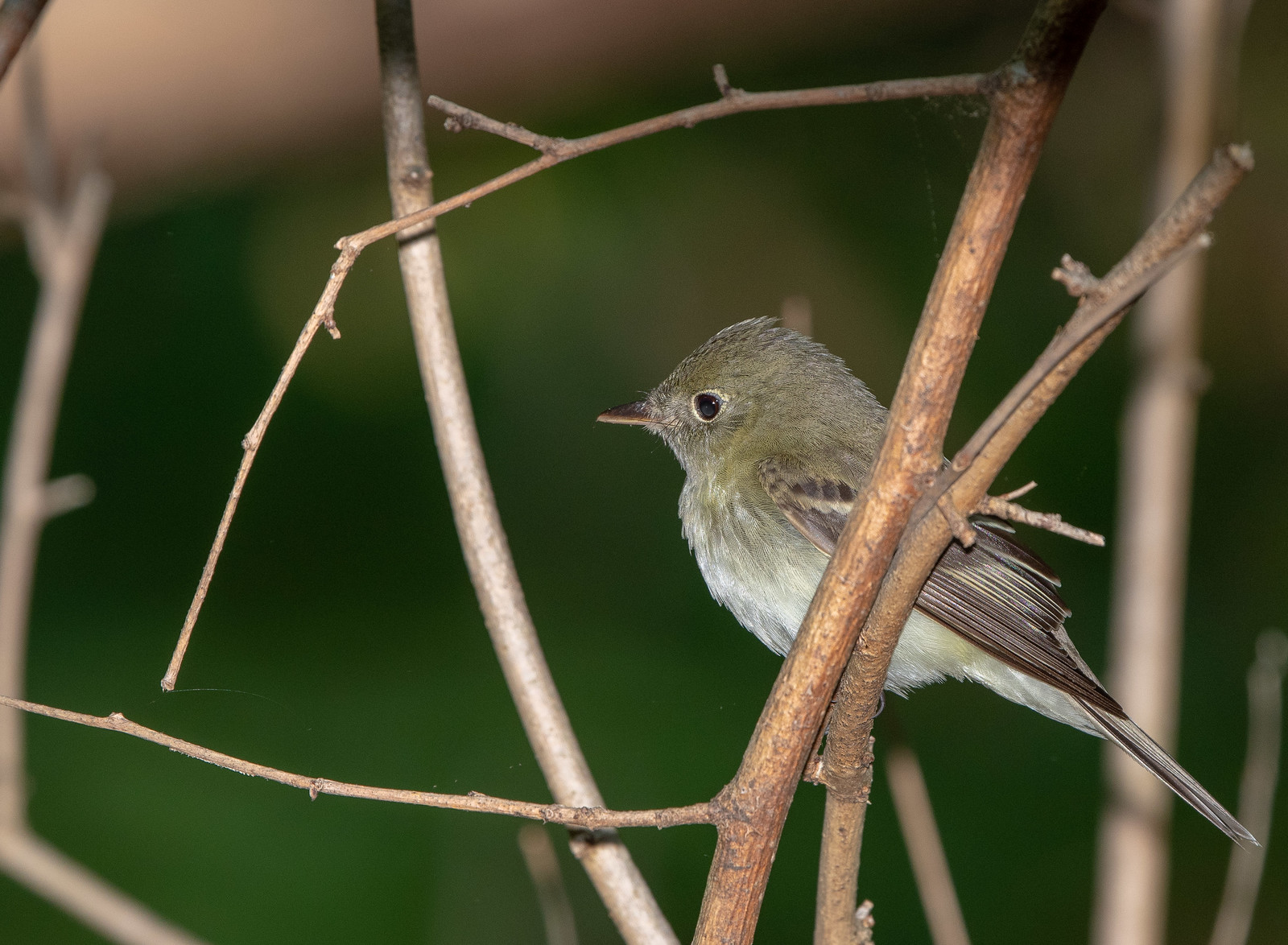| Early Spring Date: | April 27 |
| Late Spring Date: | June 1 |
| Best Dates to See in Spring: | May 12-30 |
Spring: Acadian Flycatchers breed in the Washington metro area, but they are not known to nest at Monticello Park. They are regular visitors to the park, but never in high numbers. They dribble in at the beginning of May, and you could see or hear one at any time during the month, with the chances increasing as the month progresses. Acadian Flycatchers have bred at Glencarlyn Park in Arlington and other locations not far from Monticello.
Fall: About 10 Acadian Flycatcher sightings occur at Monticello each fall. More Acadians probably pass through the park unseen. They can be at the park anytime between late July and mid-October.
Where to See Them in the Park
Acadian Flycatchers often perch and stay still on leafy branches at the mid-story and below. They could be anywhere in the park, and your chances to see them will be reduced if they are not vocalizing.
Physical Description

Acadian Flycatchers are in the genus Empidonax. Flycatchers in this genus are sometimes called empids, and empid species are difficult to tell apart. In the Advanced Birding guide in the Peterson Series, Kenn Kaufman said that he could confidently identify about 80 percent of the empids he sees, and he would have strong hunches on another 10 or 15 percent. More variation often exists within each species than between species. Most are little grayish-olive flycatchers with eyerings and wingbars. Some have a yellowish tinge to their underparts. The sexes are similar. Empids sometimes will leave a branch to hawk an insect and return to the same branch or one nearby. The only definitive way to identify most of them is by voice. They tend to perch on branches and vocalize without moving, and they are a similar color to the leaves on trees.

Acadian Flycatchers are the most common empid at Monticello, but some empids in the park who are identified as Acadians might be other species.
Fall: Some Acadians in fall plumage are more yellow below than in the spring, which can cause them to be confused with the uncommon Yellow-bellied Flycatcher (another empid).
Vocalizations
The Acadian song is an explosive peet-sah. They also produce a vocalization with a single note.
Hear the vocalizations of the Acadian Flycatcher.Notes
Acadian Flycatchers belong to the family of tyrant flycatchers, which is the largest bird family in the world, containing roughly 4 percent of all bird species. Tyrant flycatchers are found exclusively in the New World. About 15 tyrant flycatchers are empids, most of whom are found in North America. Only five empids are found regularly in the eastern states. An eastern empid called the Traill's Flycatcher was split during the 1970s into the Willow and the Alder Flycatchers. You cannot differentiate between the two by plumage, even if you have one in your hand and can do measurements.
Origin of Names
Common Name: Acadian from Acadia, which was an old name for Nova Scotia. The Acadian Flycatcher has the most southerly breeding range of the Empidonax flycatchers, and it was probably confused with one of the other empids who has a more northerly range. Flycatcher because they catch flies.
Genus Name: Empidonax means king of the gnats.
Species Name: Virescens means growing green, from the plumage.
Acadian Flycatcher video footage
Return to the Index
